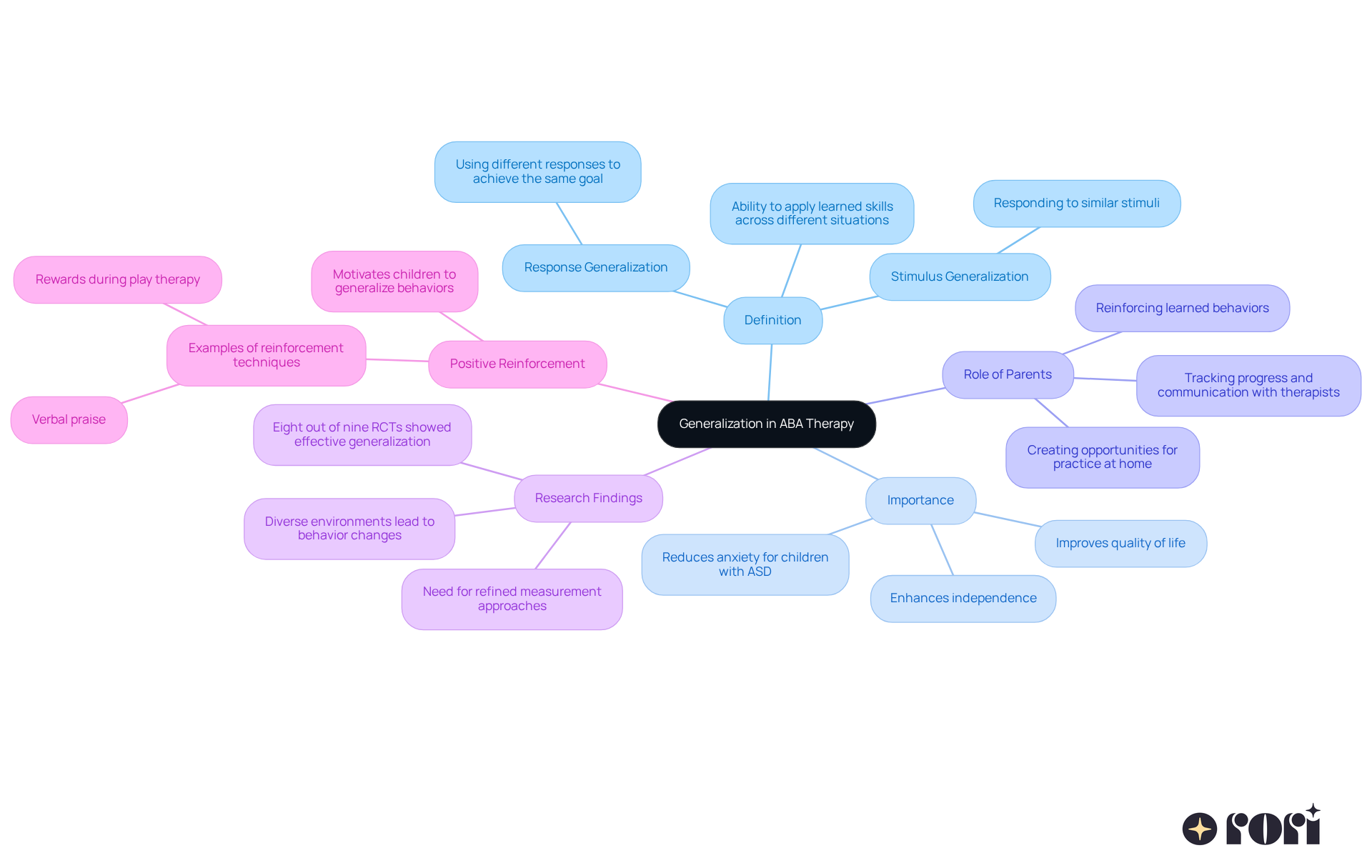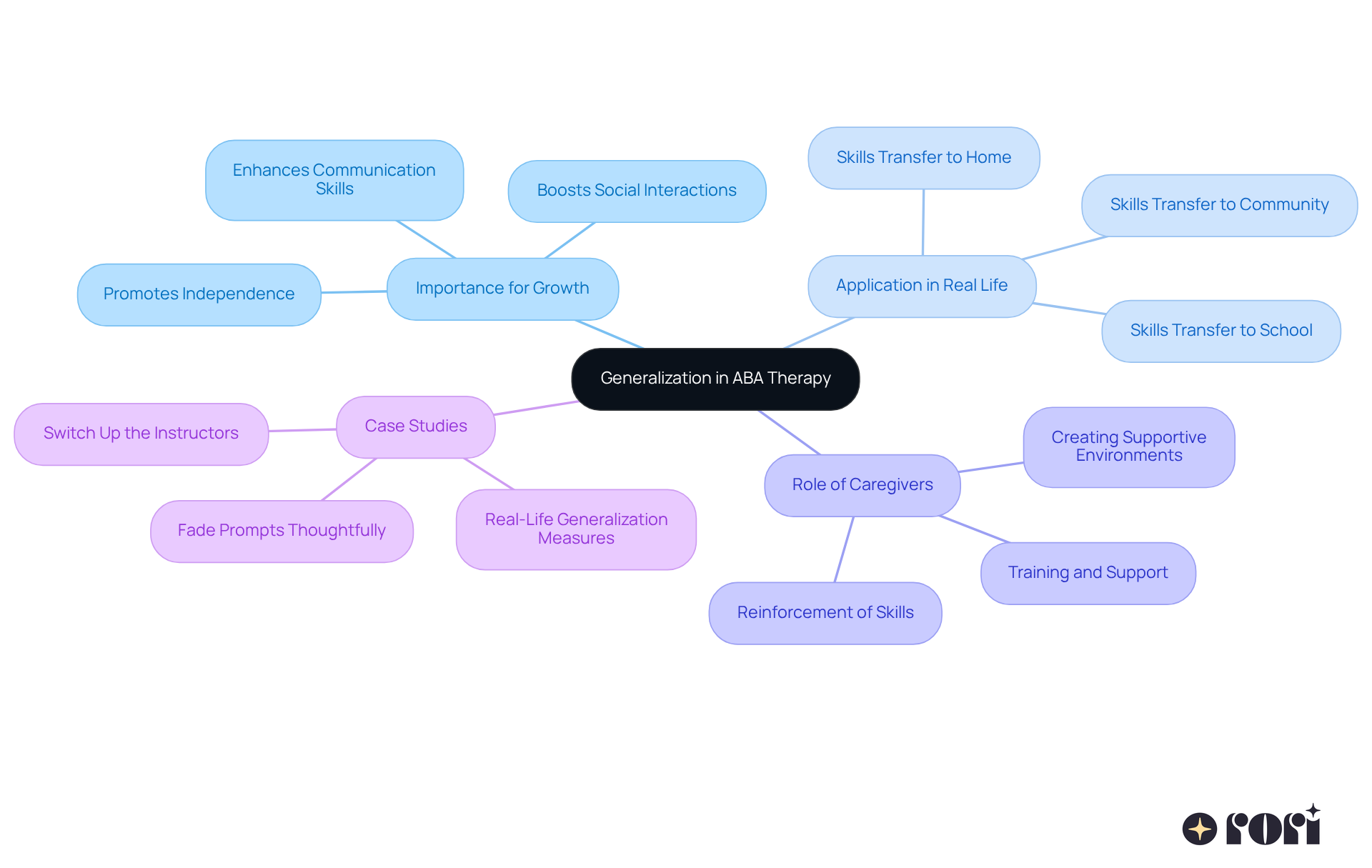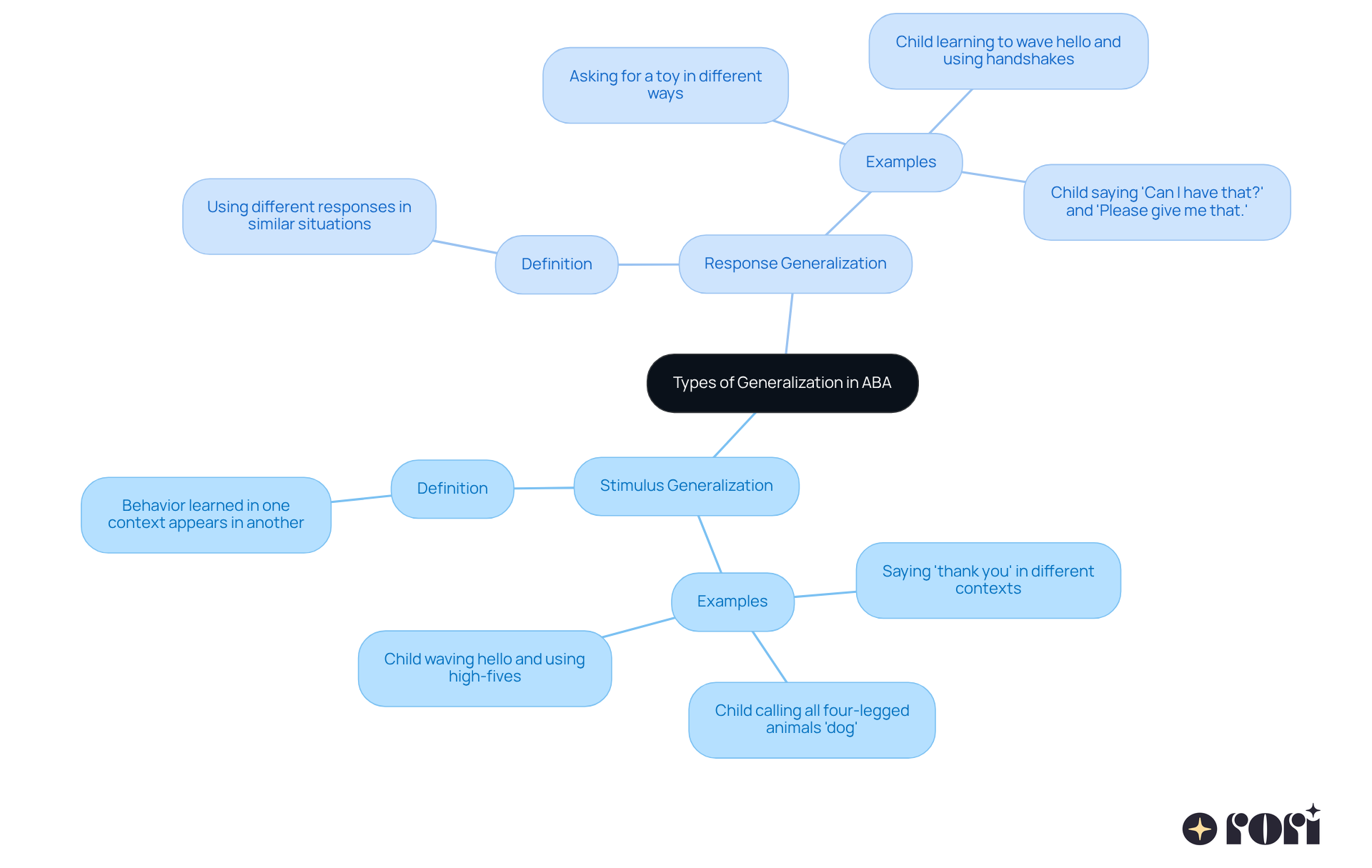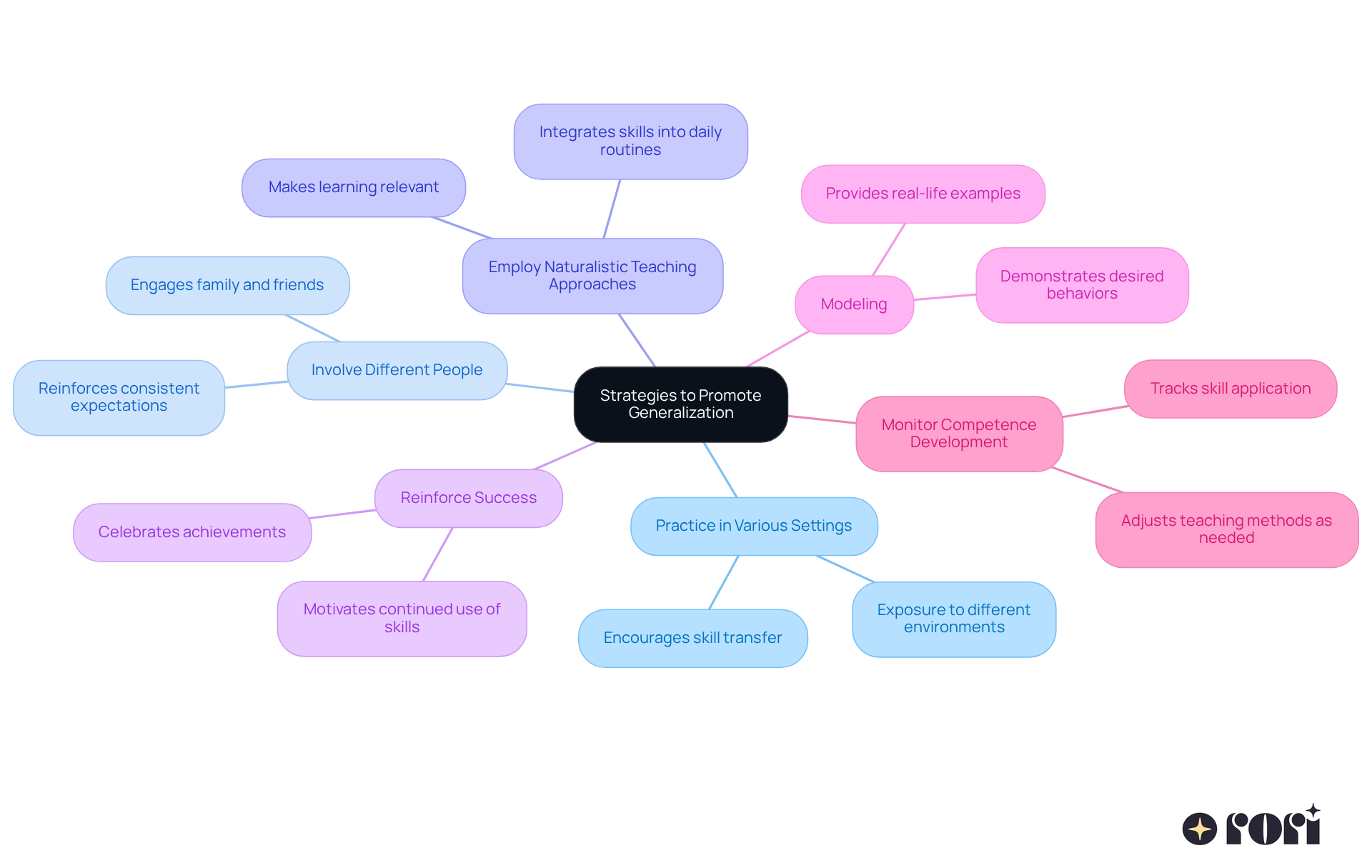Generalization in Applied Behavior Analysis (ABA) is all about helping learners take the skills they’ve picked up in one setting and apply them in different situations. This ability is super important for fostering independence and enhancing overall quality of life.
So, how can parents promote this vital skill? One effective way is by practicing in various settings and involving different people. This approach ensures that the behaviors learned in therapy seamlessly transfer to real-life scenarios.
Let’s explore this together! Imagine your child learning to ask for help during a therapy session. Now, picture them using that same skill at home or in a store. It’s all about making those connections!
By mixing things up and creating opportunities for practice, you’re setting the stage for success. Remember, every little bit counts, and you’re not alone in this journey. We’re here to help you every step of the way!
Understanding the nuances of Applied Behavior Analysis (ABA) therapy can be a game changer for parents navigating their child's learning journey. One key concept to grasp is generalization—this is all about taking the skills learned in one setting and applying them to different real-life situations. 🌟
In this article, we’ll dive into why generalization is so important in ABA. It’s not just about learning; it’s about fostering independence and enhancing the quality of life for children, especially those with Autism Spectrum Disorder. But here’s the big question: how can parents help their kids use these skills outside the therapy room?
Let’s explore this together! We’ll uncover some strategies that can empower you as caregivers and help maximize the benefits of ABA therapy in everyday life. We’re here to help you every step of the way!
What is generalization ABA? It is the process of helping learners take what they’ve learned in one situation and apply it to different ones. Imagine your child learning to greet their therapist during a session. Wouldn’t it be wonderful if they could also greet family members, friends, or even strangers at the park? That’s the magic of generalization! Understanding what is generalization ABA is crucial because it helps kids use their skills in real life, making them more independent and improving their overall quality of life.
Research shows that eight out of nine randomized controlled trials found effective generalization across various practitioners and settings. This highlights just how important it is when planning therapy. Plus, for kids with Autism Spectrum Disorder (ASD), being able to abstract their skills means they can navigate different social situations with confidence. Specialists often remind us that without generalization, the skills learned in therapy can stay locked away in the therapy room, limiting our kids' potential.
As parents and caregivers, you play a vital role in this journey! By creating opportunities for practice in everyday situations, you can help your child thrive. Learning about ABA principles and strategies, particularly what is generalization ABA, can empower you to provide the right support at home, complementing what they learn in therapy. This active involvement not only helps you but also leads to better outcomes for your child. You’ll be making informed choices that positively impact their progress.
And let’s not forget about positive reinforcement! It’s a key part of ABA therapy that motivates kids to generalize their new behaviors effectively. So, let’s explore this together! Your involvement can make a world of difference.

What is generalization ABA therapy, and why is it such an important part of the process? Understanding what is generalization ABA helps kids take the skills they learn and use them in different places, which is key for their growth and independence. Imagine if a child learns to ask for help during therapy but struggles to do the same in a classroom or at home. That’s where broadening comes in! By focusing on applying skills in real-life situations, therapists help ensure that what kids learn is not just useful but also relevant to their everyday lives, which exemplifies what is generalization ABA.
Think about it: when kids practice asking their friends to play during recess or asking for help at home, they start to see real improvements. This not only boosts their social interactions but also enhances their communication skills and independence. And let’s not forget about the role of caregivers! When caregivers are trained and informed, they can support their kids in practicing these skills in natural settings.
It’s all about creating a supportive environment where kids can thrive. Case studies show that kids who practice these skills in everyday situations really shine! So, let’s embrace these broadening strategies in therapy. They empower kids to navigate their world with confidence and independence. Plus, when caregivers are educated, they can make informed choices that positively impact their child’s journey. We’re here to help you every step of the way!

In Applied Behavior Analysis (ABA), generalization can be categorized into two main types: stimulus generalization and response generalization. Let’s break these down in a way that feels relatable!
Stimulus Generalization happens when a behavior learned in one situation pops up in another, similar context. For instance, imagine a young person who learns to say 'thank you' when they receive a gift. They might also express appreciation when someone helps them or gives them a compliment. This shows how they can apply what they've learned in different settings, like home, school, or even out in the community. It’s super important because it helps ensure that the skills they acquire are useful everywhere!
Response Generalization is all about using different ways to respond in similar situations. Picture this: a child learns to ask for a toy by saying, 'Can I have that?' They might also say, 'Please give me that.' This kind of flexibility is key for boosting social interactions and fostering independence.
Both types of generalization in ABA are essential for helping young individuals adapt their learned behaviors to real-life situations. It’s all about improving their social skills and overall independence!
Now, let’s talk about how we can support caregivers. By equipping them with ABA principles and strategies through education, we can enhance their ability to help their kids reach their behavioral goals. When caregivers understand these concepts, they can actively participate in their child’s learning journey. This means the skills taught in therapy can be generalized effectively across different environments. Plus, this active involvement not only leads to better behavioral outcomes but also creates a nurturing atmosphere that’s crucial for growth.
So, let’s explore this together! If you have any thoughts or experiences to share, we’d love to hear from you!

To help your child generalize skills, there are some effective strategies you can try:
Practice in Various Settings: Encourage your little one to practice their skills in different places—like at home, in the park, or during family gatherings. This exposure helps them use what they’ve learned in various situations, making it easier to transfer those skills when they’re needed.
Involve Different People: Get family members and friends involved in practicing these skills with your child. When they see that the same behavior is expected from different people, it helps them understand that they can generalize their responses.
Employ Naturalistic Teaching Approaches: Try to weave these skills into everyday routines and activities. This way, your child can use what they’ve learned in real-life situations, making the learning process feel more relevant and meaningful.
Reinforce Success: Celebrate when your child successfully applies a skill in a new context! Positive encouragement can motivate them to keep using that behavior in different scenarios, reinforcing their learning.
Modeling: Show your child the desired behavior in various situations. By observing real-life examples, they can learn how to generalize their skills more effectively.
Monitor Competence Development: Keep an eye on how well your child is using their skills outside of the original learning environment. Regularly checking in on their progress and adjusting your approach as needed can help ensure they maintain and effectively use their abilities over time. The behavior care engine is a great tool for updating intervention plans based on what you observe, keeping everything aligned with your child’s evolving needs.
By using these strategies, you can really boost your child’s ability to generalize skills, leading to greater independence and success in their daily life. As we often see in ABA therapy, understanding what is generalization aba ensures that behaviors learned in a structured setting extend beyond to everyday situations, enriching the learner’s daily life and boosting independence.
Let’s explore this together! Your journey in supporting your child is important, and we’re here to help you every step of the way!

Understanding generalization in ABA therapy is so important for helping kids gain independence and real-world skills. It’s all about enabling them to take what they learn in therapy and apply it in different settings, which boosts their confidence in everyday situations. This not only enriches their social interactions but also significantly enhances their overall quality of life.
The article really shines a light on why generalization matters. It breaks down what it is, the different types, and offers practical strategies for parents. Both stimulus and response generalization are key in helping kids adapt their learned behaviors to various contexts. Plus, the active involvement of caregivers is crucial! By creating opportunities for practice and reinforcing positive behaviors, parents can really complement the therapy their child receives.
In conclusion, embracing generalization strategies in ABA therapy is a fantastic way to support children’s growth and independence. By getting involved in their learning journey and applying these techniques in daily life, parents can make a huge difference in their child’s ability to navigate the world with confidence. Sure, the journey might have its challenges, but the joy of watching a child thrive in different social situations makes it all worthwhile. Let’s explore this together!
What is generalization in ABA therapy?
Generalization in ABA therapy is the process of helping learners apply what they’ve learned in one situation to different situations, enhancing their ability to use skills in real life.
Why is generalization important for children?
Generalization is important because it enables children to use their skills in various contexts, promoting independence and improving their overall quality of life.
How effective is generalization in therapy according to research?
Research indicates that eight out of nine randomized controlled trials found effective generalization across various practitioners and settings, highlighting its significance in therapy planning.
How does generalization benefit children with Autism Spectrum Disorder (ASD)?
For children with ASD, generalization allows them to abstract their skills, helping them navigate different social situations with confidence.
What role do parents and caregivers play in promoting generalization?
Parents and caregivers play a vital role by creating opportunities for practice in everyday situations, which helps children thrive and complements the learning that occurs in therapy.
How can learning about ABA principles help parents?
Understanding ABA principles and strategies empowers parents to provide the right support at home, leading to better outcomes for their child.
What is the role of positive reinforcement in generalization?
Positive reinforcement is a key part of ABA therapy that motivates children to effectively generalize their new behaviors.